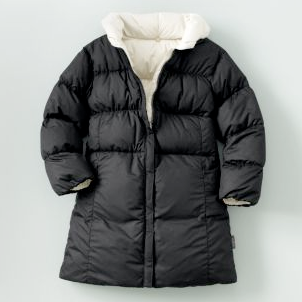I was fortunate enough to have met Maxwell Gillingham-Ryan, the founder and NY editor of Apartment Therapy, while working at Martha Stewart. Always full of unique perspective and practical advice, I asked if he would share his thoughts on how to manage kids and all their "stuff" (or dare I say, clutter). So many of us find organizing and managing children's toys, books, artwork, or even clothes, a daily challenge. A practitioner of "less is more," he takes it to a degree that was even surprising to me.
Do you have an overarching approach to organizing children and their stuff?
"Children, more so than adults, are natural collectors of stuff. Parents should not be surprised that they have more things coming into their lives. The challenge is how to allow for it and build a doorway by which the stuff goes out again. We need to remember that children care most about what is right in front of them at the moment. They are not archivers by nature, we are."
Maxwell summed it up in these words from his book "If you have the filter way at the front door, you don't have to deal with the other problems later." He and his wife, Sara Kate, are "careful editors and careful buyers. We have to be given the rate children produce and collect."
The bedroom of Maxwell's 3 year old daughter. Edited while incredibly inviting and warm.
Maxwell made his point. We all should work on that filter, our upfront editing.
That said, will you offer some smart strategies or systems for parents to store toys?
"First, it is important to take old toys out, as you move new toys in. There is much less attachment to toys. Most are heavily used and then totally forgotten. So, keep to a minimum. Take them to charity. Most of all, kids want to play pretend like they are their parents."
For storage, he likes "open bins that can sit on the floor and be moved around. It is important for children to be able to see what is in the bins. If something is hidden, it is out of mind. It is important to keep toys fresh and accessible." He prefers the clear, rigid plastic storage bins such as these from the Container Store. Storage should be unified. "To the extent possible, keep all toys in a child's room and, for example, all art supplies in the playroom. The toys can move around the house, but should all go back in the child's room." (He acknowledges that this is easier to do in a small apartment.)

Ideal storage bins with toys and stuffed animals.
What are your suggestions and systems for storing children's artwork?
As a parent and former teacher at a Waldorf School, Maxwell stresses the importance of reinforcing today and not dwelling on the past. When artwork is saved, it slows down children as there becomes pressure to replicate. Here is his solution for storing and displaying art:
1. Keep something representative of the session or moment.
2. It is important to have a real, caring space. The refrigerator is not enough. His mother had an entire brick wall for display.
3. Keep only the best from the session. Early on, throw away work out of your children's sight.
4. If you commit to collecting artwork, you must care for it. He likes the artist folders for preserving work. If you have space, he loves the flat file drawers (in stacks of 2-3) and would put in the playroom. 5. For display of artwork, there are several options. He and his wife use blu tack, a simple adhesive, to hang their daughter's art. You can also buy chipboard, cut and paint it for a big section of your wall. Alternatively, you can frame a corkboard. Be sure to paint the frame the same color of the room "so it does not become more visual clutter." Finally, if you prefer a more modern look, try magnetic paint (the same color of the wall) to hang work with magnets.
Interestingly, Maxwell is not a proponent of framing artwork for younger children. "That makes it too special. It needs to be a moving display. Children love change and want to show you what they have done now."
Flat files for artwork. See Apartment Therapy's round up of flat files and cabinets.
Thank you Maxwell. We are all inspired and smarter. Be sure to check out Apartment Therapy's site for children, Ohdeedoh.com, for many great storage ideas.
 Martha Stewart is at her best on Halloween with the most original recipes, crafts and ideas for entertaining. Look at the fun Candy Creature treats. The Little Devil Cupcake is my favorite.
Martha Stewart is at her best on Halloween with the most original recipes, crafts and ideas for entertaining. Look at the fun Candy Creature treats. The Little Devil Cupcake is my favorite.










































